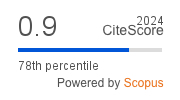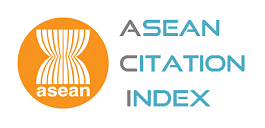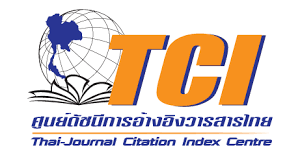Developing a Pluralistic Model for Marketing-led Crisis Recovery of Tourist Destinations: A Case Study of Phuket, Thailand
Keywords:
Crisis management, Recovery strategies, Travel behaviour, Push/pull motives, Mixed methodAbstract
The overall aim of this study is to examine the adequacy of tourism crisis recovery strategies evident in a major international tourism destination vulnerable to tourist downturns. In particular, we explore whether the traditional lagged approach to destination marketing can lead to inefficiencies and how to develop a more effective model for crisis recovery. This study compares tourists’ social-psychological needs with destination capabilities in real time during the recovery from the COVID-19 crisis, in using a novel methodological approach. The simultaneous collection of supply-side and demand-side data allows for a meaningful comparison of the effectiveness of recovery strategies, that is absent from most of the literature. A mixed-methods approach was used to collect data. Interviews with tourist leaders found a reduced capacity within the destination to offer quality tourism services and a high priority placed on tourist safety. In contrast, a survey of 401 domestic Thai travellers demonstrated that safety concerns were accorded a low priority. Instead, potential domestic travellers were motivated by the quality of services and facilities available. The development of a pluralistic model extends crisis recovery theory by incorporating the early monitoring of the socio-psychological needs of potential travellers into recovery campaigns.
References
Aldao, C., Blasco, D., & Espallargas, M. (2022). Lessons from COVID-19 for the future: destination crisis management, tourist behaviour and tourism industry trends. Journal of Tourism Futures, 1-15.
Antwi, C., Mensah, H., Mensah, P., & Darke, I. (2023). Crisis-induced HR practices and employee resilience during COVID-19: evidence from hotels. Anatolia, 35(2), 374–388.
Arbel, A., & Bargur, J. (1980). A planning model for crisis management in the tourism sector, European Journal of Operational Research, 5(2), 77-85.
Assaf, A., Kock, F., & Tsionas, M. (2022). Tourism during and after COVID-19: An Expert-Informed Agenda for Future Research. Journal of Travel Research, 61(2), 454-457.
Avraham, E. (2021). Recovery strategies and marketing campaigns for global destinations in response to the Covid-19 tourism crisis. Asia Pacific Journal of Tourism Research, 26(11), 1255-1269.
Avraham, E., & Ketter, E. (2008). Media strategies for marketing places in crisis: Improving the image of cities, countries, and tourist destinations. Butterworth-Heinemann.
Avraham, E., & Beirman, D. (2022). From SARS through Zika and up to COVID-19: Destination recovery marketing campaigns in response to pandemics. Annals of Leisure Research, 26(5), 737-758.
Beirman, D., & Van Walbeek, B. (2011). Bounce Back: Tourism Risk, Crisis and Recovery Management Guide. Bangkok: PATA.
Berbekova, A., Uysal, M., & Assaf, A.G. (2021). A thematic analysis of crisis management in tourism: A theoretical perspective. Tourism Management, 86, 1–13.
Bhati, A., Mohammadi, Z., Agarwal, M., Kamble, Z., & Donough-Tan, G. (2022). Post-COVID-19: cautious or courageous travel behaviour? Asia Pacific Journal of Tourism Research, 27(6), 581-600.
Braun, V., and Clarke, V. (2006). Using thematic analysis in psychology. Qualitative Research in Psychology, 3(2), 77–101.
Bremser, K., Crowley-Cyr, L., Abraham, V., Moreno-Martin, M.J. & Carreno, M. (2021). Application of the health belief model to explain public perceptions, travel intentions and actions during COVID-19: a sequential transformative design. Journal of Hospitality and Tourism Insights, 5(5), 865-885.
Bryman, A., & Bell, E. (2011). Business research methods, 2nd ed. Oxford: Oxford University Press.
Cahyanto, I., Wiblishauser, M., Pennington-Gray, L., & Schroeder, A. (2016). The dynamics of travel avoidance: The case of Ebola in the U.S. Tourism Management Perspectives, 20, 195-203.
Cambra-Fierro, J., Fuentes-Blasco, M., Gao, L., López-Pérez, M., & Melero-Polo, I. (2022). Links between communication and tourist destination perception: a heterogeneity analysis during the early pandemic reopening stage in China. Asia Pacific Journal of Tourism Research, 27(9), 907-924.
Cacioppo, J. T., & Hawkley, L. C. (2003). Social isolation and health, with an emphasis on underlying mechanisms. Perspectives in Biology and Medicine, 46(3), S39-S52.
Çolakoğlu, U., Yurcu, G., & Avşar, M. (2021). Social isolation, anxiety, mental well-being and push travel motivation: the case of COVID-19 in Turkey. Asia Pacific Journal of Tourism Research, 26(11), 1173-1188.
Creswell, J. (2007). Qualitative inquiry and research design: Choosing among five approaches (2nd ed.). California, United States of America: SAGE Publications, Inc.
Crompton, J. (1979). Motivations for pleasure vacation. Annals of Tourism Research, 4, 408-424.
Dann, G. (1977). Anomie, Ego-Enhancement and Tourism. Annals of Tourism Research, 4(4), 184-194.
Davras, O., Durgun, S., & Demircioğlu, A. (2022). Examining relationships between precautionary measures taken for COVID-19 at the destination, service quality, brand equity and behavioural intention: a comparison market segments. Asia Pacific Journal of Tourism Research, 27(10), 1013-1030.
Fakfare, P., Talawanich, S., & Wattanacharoensil, W. (2020). A scale development and validation on domestic tourists’ motivation: the case of second-tier tourism destinations. Asia Pacific Journal of Tourism Research, 25(5), 489-504.
Faulkner, B. (2001). Towards a framework for tourism disaster management. Tourism Management, 22(2), 135-147.
Fodness, D. (1994). Measuring Tourist Motivation. Annals of Tourism Research, 21(3), 555-581.
Gnoth, J., Zins, A. H., Lengmueller, R., & Bosho, C. (2000). Emotions, mood, flow and motivations to travel. Journal of Travel & Tourism Marketing, 9(3), 23–34.
Gössling, S., & Schweiggart, N. (2022). Two years of COVID-19 and tourism: what we learned, and what we should have learned. Journal of Sustainable Tourism, 30(4), 915-931.
Hair, J. F., Black, W. C., Babin, B. J., & Anderson, R. E. (2014). Multivariate data analysis (7th ed.). Pearson Education, Upper Saddle River.
Han, P., Balaban, V., & Marano, C. (2010). Travel characteristics and risk-taking attitudes in youths travelling to non-industrialized countries. Journal of Travel Medicine, 17(5), 316-321.
Hao, F., Xiao, Q., & Chon, K. (2020). COVID-19 and China’s Hotel Industry: Impacts, a Disaster Management Framework, and Post-Pandemic Agenda. International Journal of Hospitality Management, 90, 102636.
Henderson, J.C. & Ng, A. (2004). Responding to crisis: Severe Acute Respiratory Sydndrome (SARS) and hotels in Singapore. International Journal of Tourism Research, 6, 411-419.
Hong, V., & Hsu, L. (2023). Exploring the Effects of Risk Perceptions and Depression of Young Travellers on Destination Trust in the COVID-19 Pandemic. Journal of Quality Assurance in Hospitality & Tourism, 1-26.
Huang, Y-C., Tseng, Y., & Petrick, J. (2007). Crisis Management Planning to Restore Tourism After Disasters. Journal of Travel & Tourism Marketing, 23(2-4), 203-221.
Jeon, C-Y., Song, W-G., & Yang, H-W. (2022). Process of forming tourists’ pro-social tourism behaviour intentions that affect willingness to pay for safety tourism during the COVID-19 pandemic: a comparative analysis of South Korea and China. Asia Pacific Journal of Tourism Research, 27(4), 357-373.
Jiang, Y., & Wen, J. (2020). Effects of COVID-19 on hotel marketing and management: a perspective article, International Journal of Contemporary Hospitality Management, 32(8), 2563-2573.
Jin, X., Bao, J., & Tang, C. (2021). Profiling and evaluating Chinese consumers regarding post-COVID-19 travel, Current Issues in Tourism, 25(5), 745-763.
Kaushal, V., & Srivastava, S. (2021). Hospitality and tourism industry amid COVID-19 pandemic: Perspectives on challenges and learnings from India. International journal of hospitality management, 92, 102707.
Kim, H., Li, J., & So, K. (2022). Enhancing Consumer Confidence and Response Efficacy in Tourism: Typology and Effectiveness of the Hotel Industry’s Responses to COVID-19. Journal of Travel Research, 62(4), 907-925.
Klenosky, D. B. (2002). The “pull” of tourism destinations: A means-end investigation. Journal of Travel Research, 40(4), 385–395.
Lee, W., Park, S., Jung, J., Mun, S., & Jung, J. (2021). A study on tourists’ perceived risks from COVID-19 using Q-methodology. Asia Pacific Journal of Tourism Research, 26(10), 1057-1069.
Liu, M., Wang, S., McCartney, G., & Wong, I. (2021). Taking a break is for accomplishing a longer journey: hospitality industry in Macao under the COVID-19 pandemic. International Journal of Contemporary Hospitality Management, 33(4), 1249-1275.
McCartney, G. (2021). The impact of the coronavirus outbreak on Macao. From tourism lockdown to tourism recovery. Current Issues in Tourism, 24(19), 2683-2692.
Mair, J., Ritchie, B.W., & Walters, G. (2016). Towards a research agenda for post-disaster and post-crisis recovery strategies for tourist destinations: A narrative review. Current Issues in Tourism, 19(1), 1–26.
Matiza, T., & Kruger, M. (2021). Ceding to their fears: a taxonomic analysis of heterogeneity in COVID-19 associated perceived risk and intended travel behaviour. Tourism Recreation Research, 46(2), 158-174.
Ministry of Tourism and Sports. (2020). Tourism Statistics 2019. https://www.mots.go.th/news/category/585
Pavlatos, O., Kostakis, H., & Digkas, D. (2021). Crisis management in the Greek hotel industry in response to COVID-19 pandemic, Anatolia, 32(1), 80-92.
Rasoolimanesh, S. M., Seyfi, S., Rastegar, R., & Hall, C. M. (2021). Destination image during the COVID-19 pandemic and future travel behavior: The moderating role of past experience. Journal of Destination Marketing & Management, 21, 100620.
Ritchie, B.W. (2004). Chaos, crises and disasters: A strategic approach to crisis management in the tourism industry. Tourism Management, 25, 669–683.
Ritchie, B., Miller, G., & Miller, D. (2004). Crisis Communication and Recovery for the Tourism Industry. Journal of Travel & Tourism Marketing, 15(2-3), 199-216.
Rittichainuwat, B. N., & Chakraborty, G. (2009). Perceived travel risks regarding terrorism and disease: The case of Thailand. Tourism Management, 30(3), 410-418.
Sánchez-Cañizares, S., Cabeza-Ramírez, L., Muñoz-Fernández, G., & Fuentes-García, F. (2021). Impact of the perceived risk from Covid-19 on intention to travel, Current Issues in Tourism, 24(7), 970-984.
Sharma, G. D., Thomas, A., & Paul, J. (2021). Reviving tourism industry post-COVID-19: A resilience-based framework. Tourism management perspectives, 37, 100786.
Sharma, S., Woosnam, k., Singh, G., & Stylidis, D. (2022) Investigating antecedent constructs affecting potential Australian travellers’ destination image of Fiji amidst the COVID-19 pandemic. Asia Pacific Journal of Tourism Research, 27(12), 1318-1335.
Soñmez, S., Apostolopoulos, Y., & Tarlow, P. (1999). Tourism in crisis: Managing the effects on tourism. Journal of Travel Research, 38(1), 13-18.
Speakman, M., and Sharpley, R. (2012). A chaos theory perspective on destination crisis management: Evidence from Mexico, Journal of Destination Marketing & Management, 1(1/2), 67-77.
Talawanich, S., & Pongwat, A. (2022). Post-pandemic crisis communication strategy for the domestic market of Thai urban beach city. Asia Pacific Journal of Tourism Research, 27(10), 1095-1125.
Talib, A., & Ramleeb, A. (2020). An application of ‘push and pull’ domestic travel motivation model among young Malaysian adults: Post COVID-19. Journal of Humanities, Language, Culture and Business, 4(15), 34-41.
Uysal, M., Li, X., & Sirakaya-Turk, E. (2008). Push-pull dynamics in travel decisions, Handbook of Hospitality Marketing Management, Chapter 15 (pp.412-439). Eds Oh, H and Pizam, A. Routledge: Burlington, MA.
Volo, S. (2007). Communicating tourism crises through destination websites. Journal of Travel & Tourism Marketing, 23(2/4), 83-93.
Wei, C., Xu, H., & Wall, G. (2023). Asset assemblages and livelihood resilience in a coastal community. Journal of Sustainable Tourism, 32(5), 904-922.
Yeh, S-S. (2021). Tourism recovery strategy against COVID-19 pandemic, Tourism Recreation Research, 46(2), 188-194.
Zhan, L., Zeng, X., Morrison, A. M., Liang, H., & Coca-Stefaniak, J. A. (2022). A risk perception scale for travel to a crisis epicentre: Visiting Wuhan after COVID-19. Current Issues in Tourism, 25(1), 150-167.
Zhang, G., Li, F., & Guan, J. (2023). Crisis Management and the Organisational Learning of Local Travel Agencies: Lessons Learned from the COVID-19 Pandemic. Journal of Quality Assurance in Hospitality & Tourism, 1-22.
Zhong, l., Sun, S., Law, R., & li, X. (2021). Tourism crisis management: evidence from COVID-19. Current Issues in Tourism, 24(19), 2671-2682.
Downloads
Published
How to Cite
Issue
Section
License
Copyright (c) 2025 Thammasat Review

This work is licensed under a Creative Commons Attribution-NonCommercial-NoDerivatives 4.0 International License.
The opinions and ideas expressed in all submissions published in Thammasat Review are solely that of the author(s) and do not necessarily reflect that of the editors or the editorial board.
The copyright of all articles including all written content and illustrations belong to Thammasat Review. Any individuals or organisation wishing to publish, reproduce and distribute a particular manuscript must seek permission from the journal first.








